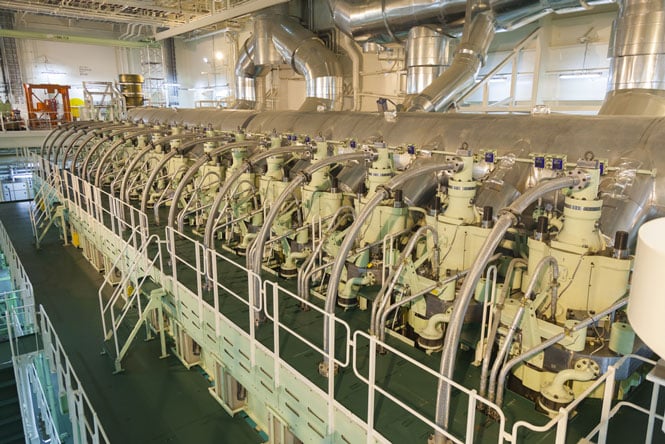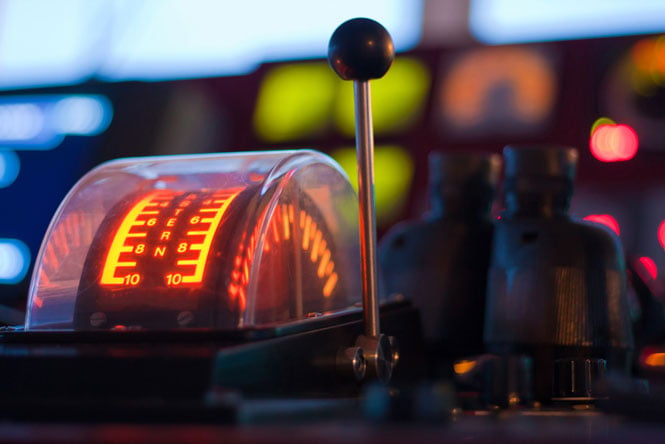![[Hero Image]](http://static.ozcruising.com.au/assets/m-cruises-com-au/hero-images/blog/m-hero-image.jpg)
Ever wondered how a cruise ship produces enough power to simultaneously move through the water and entertain thousands of passengers? The answer isn’t as complicated as you might think.
It all starts in the engine room
The engine room is the hub of the cruise ship, creating enough power to drive the vessel through the water. On a modern cruise ship, this means the engine room can soar upwards at least three decks. For safety reasons, machinery is housed in small watertight compartments. So while one compartment contains the main engines, another will house the air conditioning, and so on.

How the ship moves
While there’s a romantic idea of ships being powered by steam, cruise ships are powered by diesel engines as standard. There are three methods: direct drive, diesel electric or gas turbine.
- Direct Drive. The conventional diesel method is the simplest. The ignition of fuel creates pressure that pushes the pistons up and down. The pistons turn the crankshaft, which is connected – via gears – to the propeller via a long shaft. The gears allow the engine to turn at its fast speed, while allowing the propellers to turn at their much slower speed. With this method comes the option to use a shaft generator, which uses the circular motion of propeller shaft to generate electricity for cooking and lighting, etc. However, by design, shaft generators can be used only while the ship is moving.
- Diesel Electric. New cruise ships feature "diesel electric" propulsion. So rather than being connected to the propeller shafts, the main engines are connected to large generators in order to produce electricity. This electricity is sent to electric motors, which powers the propellers and moves the ship. Around 85% of the power goes towards the propellers while the rest is distributed around the ship to cabins, restaurants and entertainment via hundreds of kilometres of cables.
- Gas Turbine. A greener option than diesel engines, gas turbines are used to drive generators that then provide electricity to the propeller motors. Using heat from the gas turbine’s exhaust, the steam turbine produces electricity for onboard services. The first cruise line to fit its ships with gas turbines was Royal Caribbean.
Staying powered up in the port
When the ship stops moving, the massive amounts of power from the main engines and generators aren’t required. Instead, the ship uses smaller generators to supply enough power for the lights, air-con and so on.

Staying powered in an emergency
Every ship has emergency generators, so that even in the unlikely event that things go wrong, there is still vital electrical power. The backup generators are located higher up and outside, so they aren’t at risk of the same damage that may have occurred in the engine room.
Depending on its size, the cruise ship may have two or more backup generators. But these generators are solely designed to produce electricity to keep passengers and crew safe and comfortable; they cannot produce enough power to move the ship.
What if the emergency generator fails? Ships also have a battery backup, which can produce at least 24 hours of power to essential systems.
What does the future hold?
As savvy travellers come to expect more environmentally friendly ships, cruise lines are busily thinking of ways to make their ships more "green" and energy efficient. This ranges from the materials used to build the ship right down to the introduction of LED bulbs. So next time you step aboard a cruise ship, take a moment to think about the power behind your holiday.